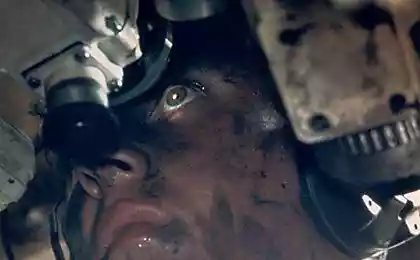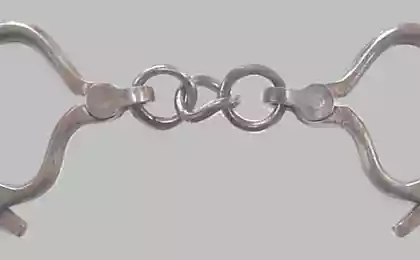1325
History in color. Photos 1963
I suggest you look at archival photographs in color, which shows the world exactly half a century ago. They can see how high-profile events in 1963, and the simple life on the streets.
London's Piccadilly Circus in 1963:
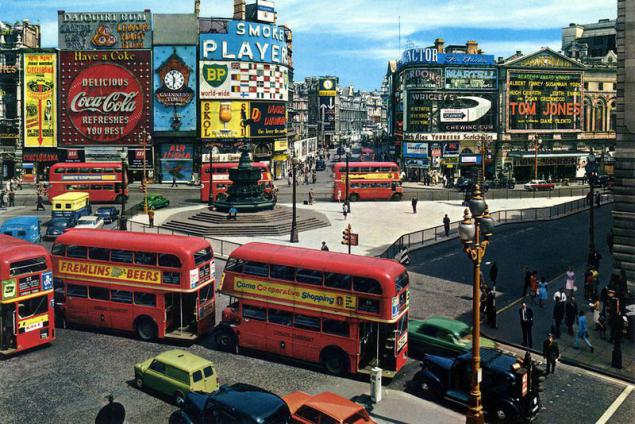
Olden went very slowly, almost everywhere you can find signs of some distant epoch.
For example, a picturesque caravan sailboats in Pakistan, 1963:
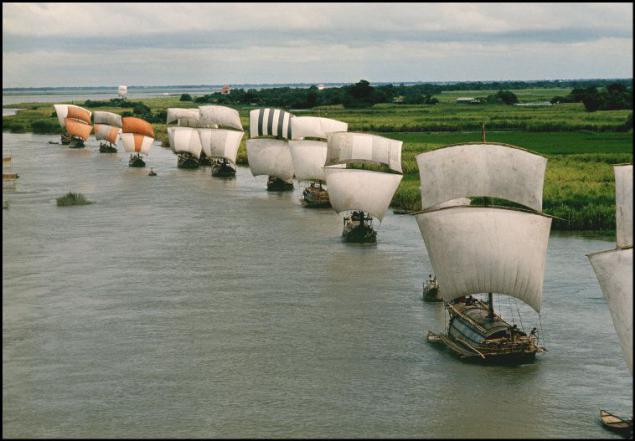
The loudest event of the year was, of course, the assassination of President John F. Kennedy on Nov. 22, 1963 The official version still claims that he acted psychotic loner. However, many believe that Kennedy was the victim of a widespread conspiracy, and in fact there was a coup d'etat in order to change policy.
In this picture the president's motorcade goes down the street one minute before the Dallas assassination:
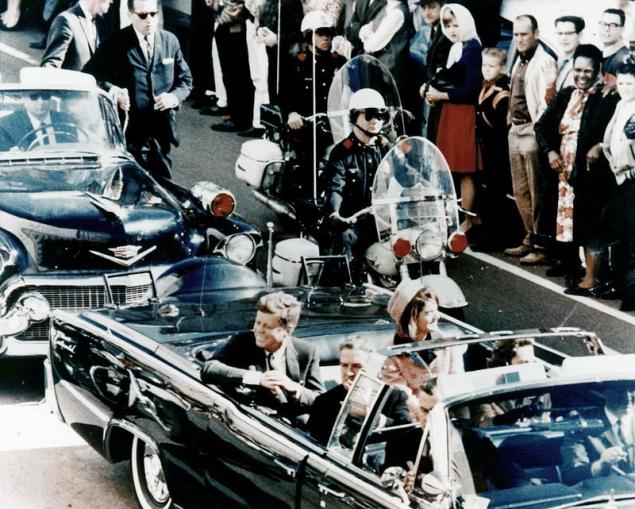
After the Cuban missile crisis the most aggressive head of state in US history, it seems very much to rethink and began to bow down to a more peaceful policy, causing frustration and even rage at the "hawks».
Shortly before the murder, October 7, 1963 Kennedy signed the Treaty Banning Nuclear Weapon Tests in the Atmosphere, in Outer Space and Under Water:
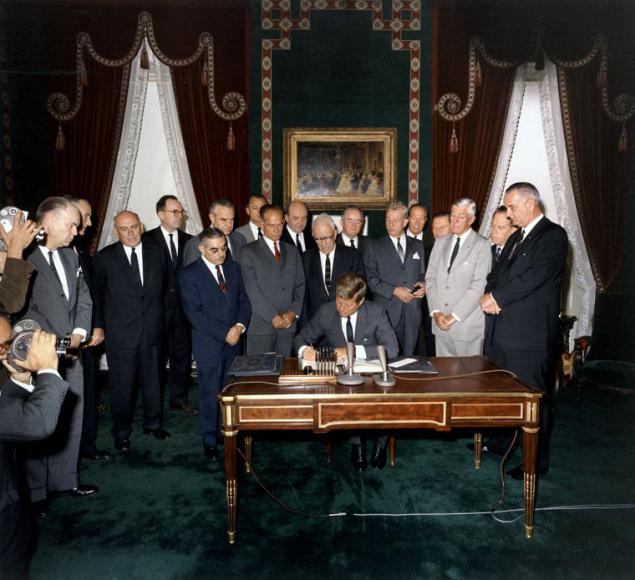
In June 1963, he said the famous speech in West Berlin «Ich bin Berliner»:

Kennedy at the Berlin Wall:

November 22, 1963, Dallas. This will remember this pair America and the world:
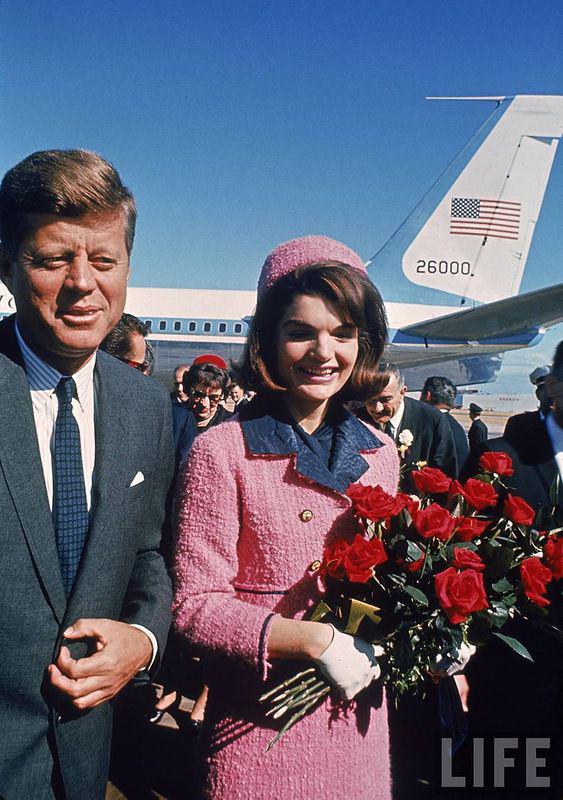
In memory of Kennedy then called the most modern international airport (shot in 1963):

In general, the beginning of the 1960s was a great era for the United States. Kennedy managed to captivate the nation of "new horizons", started many long-overdue social reforms, including in the area of racial equality.
Although ice weighed down by fear of nuclear war, America was on the rise and lunging forward.
Hollywood Boulevard in Los Angeles, 1963:

Very, very nice it was time. "The private sector" in California, 1963:

Elizabeth Taylor as Cleopatra, 1963:

Canada was also on the rise. Toronto started to tear up all the stronger:

Europe has quite recovered after the war turmoil and rapidly began to grow rich. It was in the 1960s. European capitalist countries originated the middle class who could afford private cars (though not as luxurious as in the United States).
Durer House in Nuremberg, 1963:

In Paris, the 63rd met more such ancient buses:
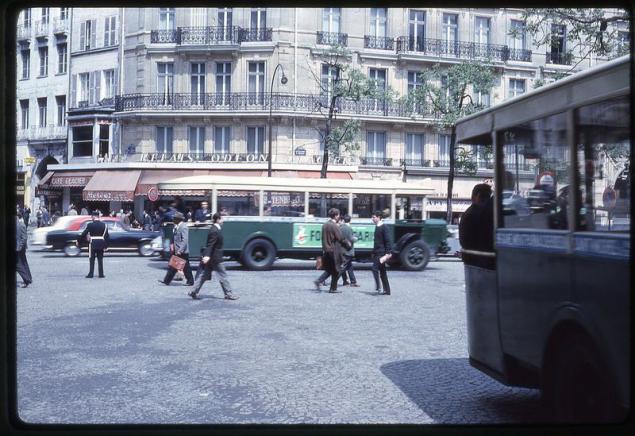
European middle class, which was just beginning to "enter into force" is not averse to the Soviet budget cars.
Moskvich-407 on the streets of Copenhagen, 1963:

Car Helsinki 1963:

The 1960s were the "golden age" of European cinema, marked by many legendary stars of today.
Romy Schneider on the beach, 1963:

In Eastern Europe in the early 1960s, things were going too well on the whole. The truth did not work at the same time to develop heavy industry and create a wealthy middle class. Bulk buying private cars will not soon begin.
Car of East Berlin in the 63-m is quite a contrast with the western part of the city:

Divided Berlin in no hurry to part with the military ruins stood as a formidable reminder:

In 1963, the photographer of the magazine "Life" Carl Maydans made a stunning photo essay on Yugoslavia.
There went the construction of socialism on the Soviet model. The President Josip Tito in 1951 turned the collectivization of agriculture, and then provided to industry economic independence and self-government. So there was a "socialist market economy", where sales counters are not different from the western
However, in the Soviet Union and then the shops are not empty, and so the Yugoslav market was not able to pull the country out of poverty. Hundreds of thousands of Yugoslavs were forced to go to work in Western Europe.

And Yugoslav 63rd Street:

1963 remembered by the Yugoslavs earthquake in the Macedonian capital Skopje. It was July 26, 1963 and destroyed much of the city. The earthquake 1070 people were killed and about 3000 injured, around 75% of homes were destroyed or severely damaged:
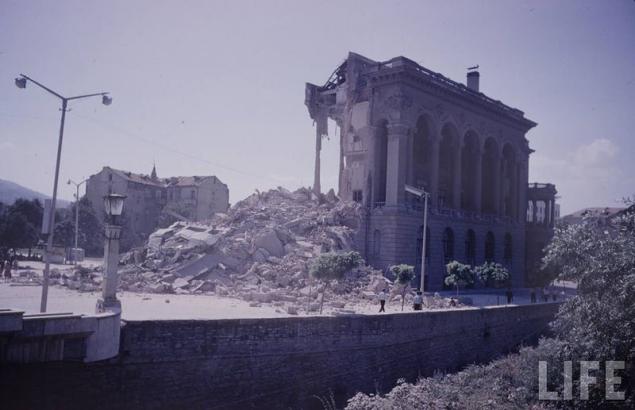
Let's see a bit of the "Third World».
Mexico City in 1963:

Almost all of Latin America then went to American cars, but in Mexico and Brazil in the 1960s will be built factories for the production of the German "beetles».
Especially many American wheelbarrows were in those countries who are lucky enough to natural resources. Venezuela in 1950 to earn good money by selling oil, the proceeds of which were spent on the construction and the American consumer goods.
Night Caracas 1963 .:

The Somali capital of Mogadishu was in 1963, quiet, comfortable and safe place:
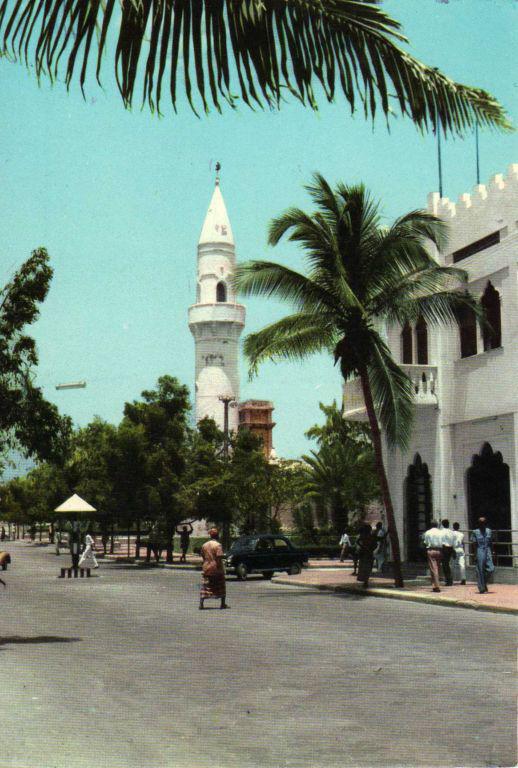
Source: visualhistory.livejournal.com
London's Piccadilly Circus in 1963:

Olden went very slowly, almost everywhere you can find signs of some distant epoch.
For example, a picturesque caravan sailboats in Pakistan, 1963:

The loudest event of the year was, of course, the assassination of President John F. Kennedy on Nov. 22, 1963 The official version still claims that he acted psychotic loner. However, many believe that Kennedy was the victim of a widespread conspiracy, and in fact there was a coup d'etat in order to change policy.
In this picture the president's motorcade goes down the street one minute before the Dallas assassination:

After the Cuban missile crisis the most aggressive head of state in US history, it seems very much to rethink and began to bow down to a more peaceful policy, causing frustration and even rage at the "hawks».
Shortly before the murder, October 7, 1963 Kennedy signed the Treaty Banning Nuclear Weapon Tests in the Atmosphere, in Outer Space and Under Water:

In June 1963, he said the famous speech in West Berlin «Ich bin Berliner»:

Kennedy at the Berlin Wall:

November 22, 1963, Dallas. This will remember this pair America and the world:

In memory of Kennedy then called the most modern international airport (shot in 1963):

In general, the beginning of the 1960s was a great era for the United States. Kennedy managed to captivate the nation of "new horizons", started many long-overdue social reforms, including in the area of racial equality.
Although ice weighed down by fear of nuclear war, America was on the rise and lunging forward.
Hollywood Boulevard in Los Angeles, 1963:

Very, very nice it was time. "The private sector" in California, 1963:

Elizabeth Taylor as Cleopatra, 1963:

Canada was also on the rise. Toronto started to tear up all the stronger:

Europe has quite recovered after the war turmoil and rapidly began to grow rich. It was in the 1960s. European capitalist countries originated the middle class who could afford private cars (though not as luxurious as in the United States).
Durer House in Nuremberg, 1963:

In Paris, the 63rd met more such ancient buses:

European middle class, which was just beginning to "enter into force" is not averse to the Soviet budget cars.
Moskvich-407 on the streets of Copenhagen, 1963:

Car Helsinki 1963:

The 1960s were the "golden age" of European cinema, marked by many legendary stars of today.
Romy Schneider on the beach, 1963:

In Eastern Europe in the early 1960s, things were going too well on the whole. The truth did not work at the same time to develop heavy industry and create a wealthy middle class. Bulk buying private cars will not soon begin.
Car of East Berlin in the 63-m is quite a contrast with the western part of the city:

Divided Berlin in no hurry to part with the military ruins stood as a formidable reminder:

In 1963, the photographer of the magazine "Life" Carl Maydans made a stunning photo essay on Yugoslavia.
There went the construction of socialism on the Soviet model. The President Josip Tito in 1951 turned the collectivization of agriculture, and then provided to industry economic independence and self-government. So there was a "socialist market economy", where sales counters are not different from the western
However, in the Soviet Union and then the shops are not empty, and so the Yugoslav market was not able to pull the country out of poverty. Hundreds of thousands of Yugoslavs were forced to go to work in Western Europe.

And Yugoslav 63rd Street:

1963 remembered by the Yugoslavs earthquake in the Macedonian capital Skopje. It was July 26, 1963 and destroyed much of the city. The earthquake 1070 people were killed and about 3000 injured, around 75% of homes were destroyed or severely damaged:

Let's see a bit of the "Third World».
Mexico City in 1963:

Almost all of Latin America then went to American cars, but in Mexico and Brazil in the 1960s will be built factories for the production of the German "beetles».
Especially many American wheelbarrows were in those countries who are lucky enough to natural resources. Venezuela in 1950 to earn good money by selling oil, the proceeds of which were spent on the construction and the American consumer goods.
Night Caracas 1963 .:

The Somali capital of Mogadishu was in 1963, quiet, comfortable and safe place:

Source: visualhistory.livejournal.com









